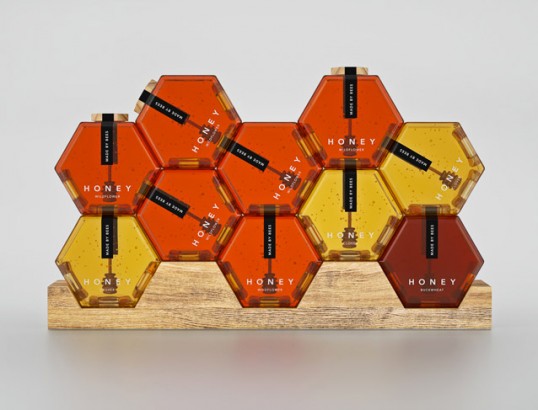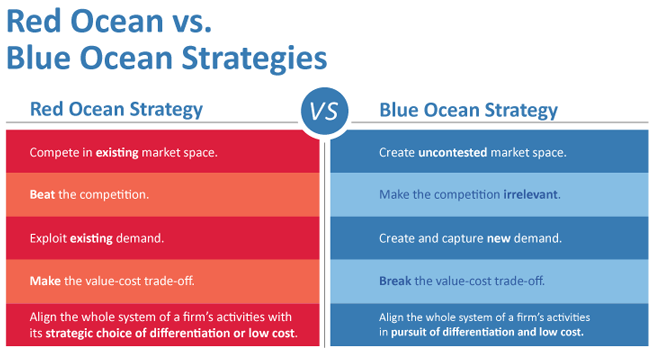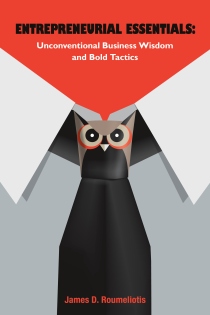by James D. Roumeliotis













When it comes to marketing food products, known in industry jargon as “Consumer Packaged Goods (using the acronym “CPG”), it takes more than mere advertising. Any brand with a deep advertising budget can do so. However, the skill is in knowing how to best utilize a limited budget for maximum effectiveness. Surprisingly, many smaller brands seem to be running circles around their much bigger brand counterparts with greater resources. The key differentiator is in the strategy and implementation including the ideal target market, brand positioning and specific media sought.
Guerrilla marketing: Getting noticed on a shoestring budget
Persuading consumers to consider your product on their shopping list takes time and an ample marketing budget. However, getting consumers to take notice of your product can be swift if a combination of Guerrilla/unconventional marketing tactics are used in conjunction with unique packaging design.
The term “Guerrilla marketing” refers to an unconventional and bold approach for a business to promote its products and/or services in ways that capture the attention of potential customers. They are creative, memorable, attract people’s attention (some may be controversial) and require a limited budget which makes it ideal for small to mid size businesses. “Guerrilla marketing” was originally coined in 1983 by Jay Conrad Levinson who also wrote the book “Guerrilla Advertising” with subsequent editions and derivatives which followed.
In keeping with the CPG theme, Nestle’s Kit Kat candy bar brand utilized Guerrilla marketing by placing creative candy-themed benches across large cities as the image below depicts.

Today, if a brand, especially a new arrival on the market, wants to stand-out in a crowded marketplace, it ought to consider the following means and tactics.
Online/digital ─ Content marketing: This is absolutely the medium/platform which should not be overlooked. Even large brands are placing more emphasis with digital in their integrated marketing strategy. Content is released frequently but in small doses utilizing Twitter, blogs, Linkedin etc. along with stunning lifestyle images and video with must view material (Instagram, Pinterest, Facebook, YouTube, Vimeo to name the most prominent digital venues).
Public Relations: As this is earned media, what is stated about a brand from a third party is considered trustworthy. Creating buzz through the media, including the use of press releases, is an inexpensive way to earn publicity in lieu of traditional advertising spend.
Alliances – associations – sponsorships: These are additional considerations to boost exposure which turns-out to be a win-win for both parties (sponsor and sponsored party/ beneficiary).
Storytelling: A brand should include storytelling which places an emphasis on the brand’s heritage, the reason for being and why it is offering such a product or products. It is more than content and a narrative, it is a picture made up of feelings, facts and interpretations.
Food packaging: Eating with our eyes
The value added in design, craftsmanship, branding and overall quality can elevate a product into an epicurean delight. Clever and innovative design significantly increases sales and improves brand performance. In addition, it can do plenty of silent marketing. Consider Toblerone, the Swiss chocolate bar brand, whose distinctive yellow triangular packaging and equally shaped product inside is instantly recognizable. It undoubtedly portrays a premium product yet offers a good value for the price. The brand’s marketing spend is much less than its competitors, though its sales and profits are known to be exceptional in its category.
There are many ways of seeing the value of design. For instance, you can measure sales and relative value as an output of changes in design. Design can also improve your standing among rivals and give you a competitive advantage. The Design Council published a report where facts and statistics concerning the value of design are highlighted. One interesting statistic is that design conscious businesses can expect a return on their internal design investments as high as 125%. That’s quite an impressive return compared to other types of investments made in a business.
What may be obvious is that if you have high quality design, you do not need to compete with your competitors on price. If the design of a product packaging has a “wow” factor to make it stand-out on the shelf, then consumers will choose it even if the price is slightly above the competing products. If the product inside is as good as its packaging, customers will enjoy what you have to offer and continue to be loyal to your brand. That is the result of offering something unique and of a higher standard.
Lifestyle marketing: Non-traditional methods to reach modern consumers
Generally speaking, a brand that is designed for a lifestyle should have a much higher emotional value to consumers than one based solely on features, benefits and cost. A study from the Kellogg School of Management revealed that brands serve as a means of self-expression along with the limitations of expressing a consumer’s identity through brands. The goal of a lifestyle brand is to become a way that people can utilize it to relate to one another. Those brands are an attempt to sell an identity, or an image, rather than a product and what it actually does.
Two CPG brands which have joined the lifestyle bandwagon and spending more money and resources away from traditional marketing are Oreo and Red Bull. The former has created one article and image on the pulse of pop culture per day for 100 days with not much revealed of what would come next. Red Bull which spends a staggering 30% of its revenue in marketing and sponsorship events, has also launched a magazine with over five million subscribers, including a record label and two film studios to produce its lifestyle and experiential material.
Healthy eating and acquiring new tastes are modern day trends which can’t be ignored by CPG marketers. Smaller portions are also a recent trend which equate to less calories for consumption along with much focus on natural and non-GMO ingredients.
Creating new categories and uncontested market space
Instead of competing head-on in the same product category, as the majority of brands are accustomed to, consider creating an entirely new class which will be in an uncontested marketplace. This approach is known as Blue Ocean Strategy®. It was developed by two professors at INSEAD, W. Chan Kim and Renée Mauborgne who are also co-authors of Blue Ocean Strategy: How to Create Uncontested Market Space and Make the Competition Irrelevant (Harvard Business Review Press). As they put it, they observed that companies tend to engage in head-to-head competition in search of sustained profitable growth. Yet in today’s overcrowded industries competing head-on results in nothing but a bloody “red ocean” (as in cutthroat competition turns the ocean bloody red) of rivals fighting over a shrinking profit pool. Lasting success increasingly comes, not from battling competitors, but from creating “blue oceans” of untapped new market spaces ripe for growth.

An intriguing case study which puts the above strategy in perspective is Australia’s Casella Wines. In 2001, it entered the overcrowded and highly competitive wine industry in the U.S. with its Yellow Tail brand. By the end of 2005, it had reached sales with 25 million cases ─ achieved on a limited marketing budget. This triumph placed Yellow Tail in the category of the overall bestselling 750ml (25.4 U.S. fl. oz.) red wine, outstripping Californian, Italian and French wine brands. It accomplished this by applying the Blue Ocean strategy framework. Consequently, Casella Wines’ Yellow Tail brand targeted the beer and ready-to-drink cocktails in the U.S. market and created Yellow Tail to be easy drinking, an informal selection, fun and an adventure ─ in essence, an uncomplicated, fruity wine structure that was instantly appealing to the mass of alcohol drinkers.
A category which should not be ignored are Millennials (aka Generation Y). They are projected to spend $65 billion on consumer packaged goods (CPG) over the next decade, yet there are many misconceptions and challenges in reaching these shoppers, according to a white paper by WPP’s Geometry Global. Millennials are the largest generation since the Baby Boomers. They are known to be quite sophisticated, technology wise, unaffected by most traditional marketing and sales pitches. As a result, CPG companies should adjust and innovate to stay digitally connected with the Millennial consumer.
Sensorial branding: Exploiting the senses
In keeping with the spirit of the five senses, you can exploit them entirely to create a favorable experience in synergy, for guests and clients alike. Below are some of the most important factors:
SIGHT – choice of packaging, its design along with its images, the font type and colors. Add to that a stand-alone point of purchase (POP) display.
TOUCH – the feel and ergonomic design of the packaging. This is how the consumer interacts with it. Plenty of emphasis should be placed on this when designing the package.
TASTE – finding the perfect balance between sour, salty, sweet, and bitter. Food product samples ought to be available as consumers would prefer to try a product they are exposed to for the first time. Presentation is equally important which has an impact on the overall image of the setting.
SMELL – it is all about the smell of the product. This sense is closely linked to emotion and memory. You can use something like computer controlled scent machines to entice. Sensory technology can be very influential down an aisle. Case in point: a French bakery café can deliberately use ventilation to deliberately spread the smell of roasted coffee and baked items sold to induce clients to make or increase their purchases. A company which is known to furnish such state-of-the art equipment is Scent Air Technology.
By integrating the brand-building strategies to appeal to all, or most of the senses, sales have actually increased.
At the end of the day
Marketing done well can improve your brand’s awareness, lead to more sales, word-of-mouth, as well as gain client loyalty.
Using clever marketing approaches which do not cost a fortune, along with innovative and attractive packaging, can lead to impressive sales. However, to develop repeat purchases (think “sell-through” at the retail level), the product itself should taste good and produced with quality ingredients.
Stay in touch with your customers via social media interactions and occasional email newsletters and a blog. Do what you can to improve the lives of these people with valuable advice and special offers. The product should exude that it occupies a part in a pleasant lifestyle.
Remain true to what is making your CPG brand a success and refuse to become complacent. Keep refining, innovating, never mislead (through false benefit claims and nutritional information) and engage constantly with your loyal clients. These activities are not deemed a onetime event but rather an on-going process.












____________________________________________
Request your TWO FREE chapters of this popular book with no obligation.


















